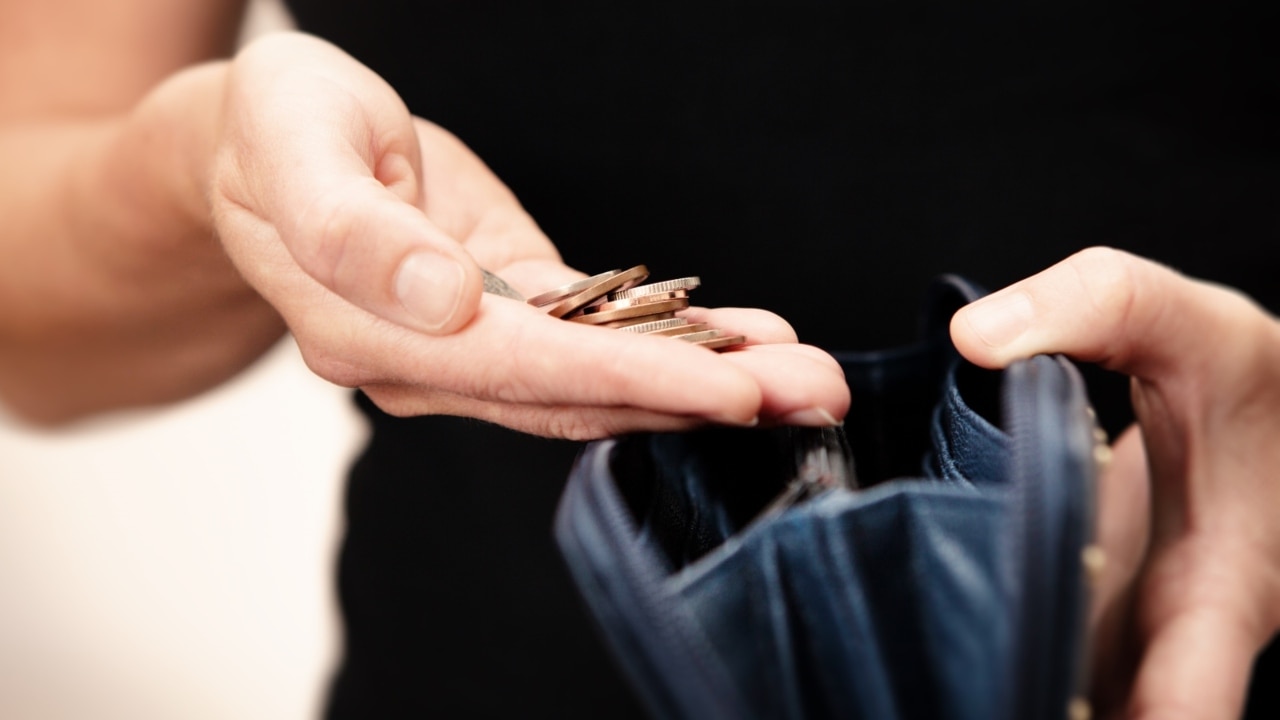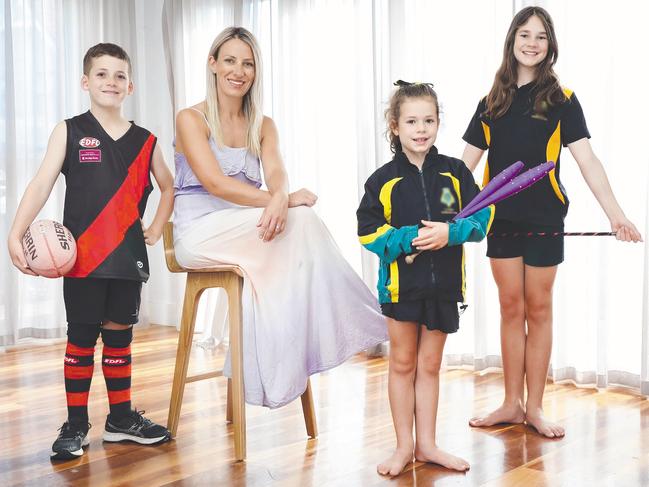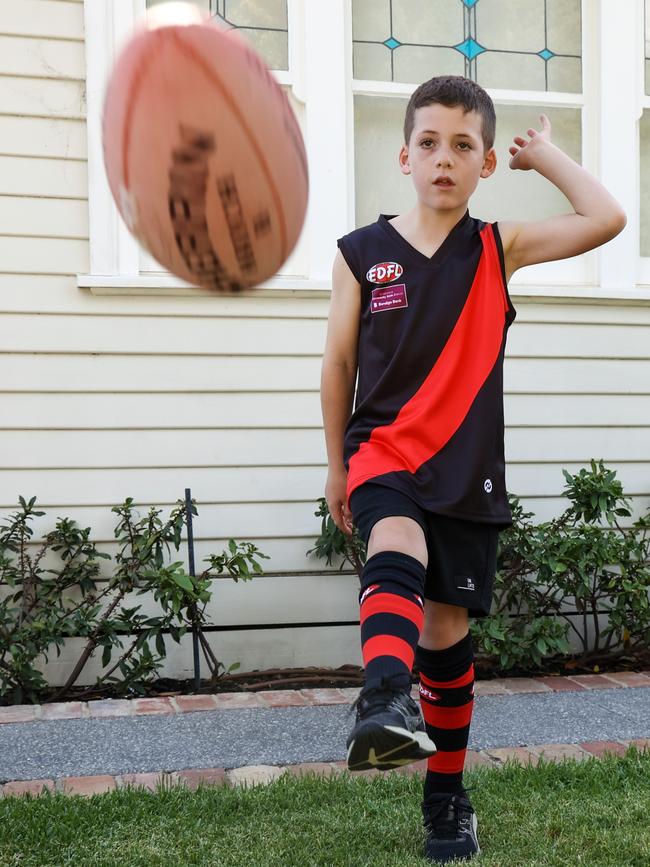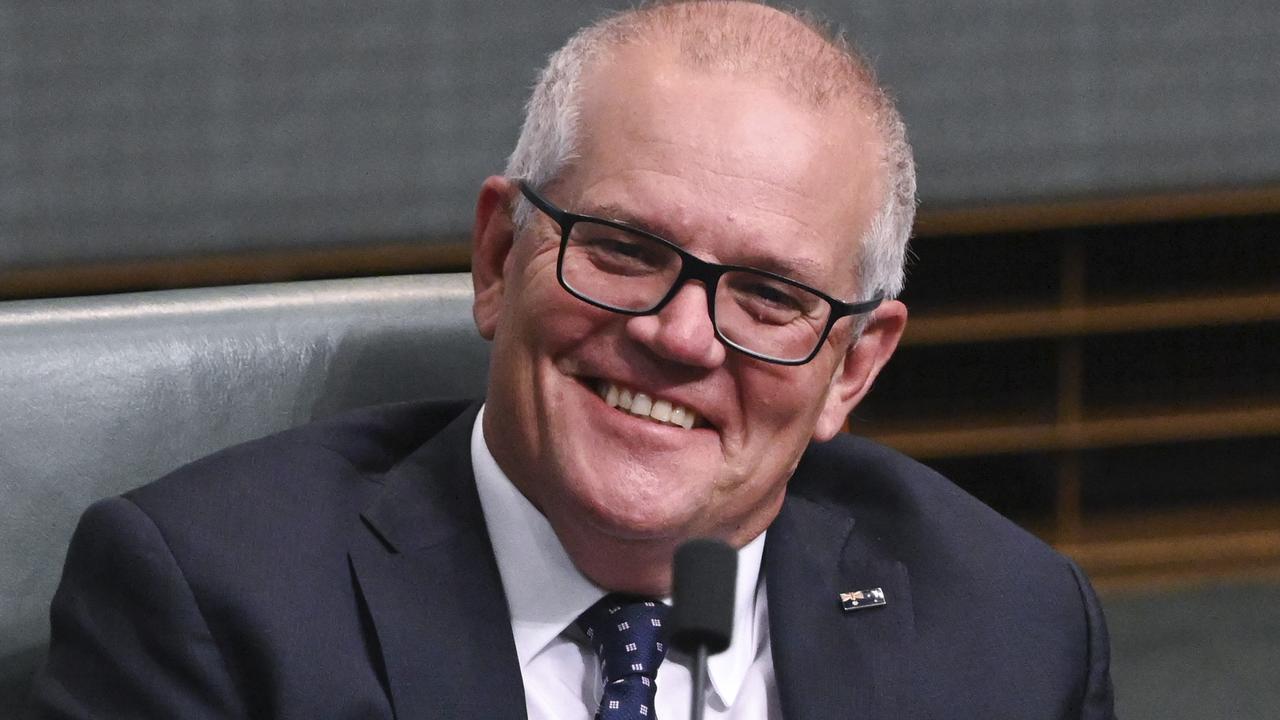Kid’s sport: most expensive and cheapest activities, tips on saving
Aussie parents are making tough choices to make sure their children continue to play sports after school. See how much each sport costs and how to save.

National
Don't miss out on the headlines from National. Followed categories will be added to My News.
Parent are prioritising their kids’ sporting activities above other household outgoings, with mums and dads revealing they would rather make sacrifices elsewhere in the weekly budget if possible.
A survey by KindiCare, an app which helps parents to compare childcare centres, found that despite cutting costs in other areas, seven in 10 parents have not made any cut backs when it comes to their kids’ sport.
It comes as sporting clubs said they are trying to help parents by encouraging them to use all the government vouchers available to school age children.
The Clearinghouse for Sport organisation found swimming was the most popular sport for Aussie kids, with a third taking lessons.
The next most popular sport was football/soccer (13.8 per cent) and gymnastics (10.5 per cent).

The Australian Swim Schools Association (ASSA) said some of its schools offered payment plans, which helped spread the cost for families.
“We are also actively working with key industry stakeholders to develop a solution to keep swimming lessons accessible amid rising costs,” chief executive officer Emily McNeill said.
“Many of our swim schools offer payment plans, so if your family’s struggling financially we strongly encourage you to contact your local ASSA member school to discuss the flexible payment options available to you.”
Urban Rec Australia said it was launching a free league funded by the adult clubs on Friday nights for teenagers to “play sport in a social setting without any pressure”.
The association holds competitions across the country for a number of sports including, soccer, hockey, netball, touch football and basketball.
“The data shows that the drop off rate for kids playing sports between the ages of 13-18 is huge,” managing director Madeleine Wilkie said.
“If they don’t want to play sports at a highly competitive level, there’s very few options.
“Most families don’t need the added stress of another expensive term-long commitment, so by making it free we are hoping the kids will be encouraged to join.”

KindiCare founder Benjamin Balk said the survey showed that the majority of respondents had seen their weekly household budget increase by $150 to $250 since Covid.
Nearly all of the 600 parents surveyed had looked at their family budgets and made changes due to the cost of living crisis.
It showed the changes were working for more than half (54 per cent) who described their financial situation as fine, good or very good.
Among some of the ways families were saving money was by buying more homebrand groceries; 86 per cent said they bought more homebrand groceries now than they did before Covid.

More than half had also taken on extra work to help pay the bills.
Other ways of managing the increased living costs was cutting back on paid childcare, with a third leaning on friends and family for help.
“If you’re finding it hard to cover childcare costs, speak with your childcare centre director to see if there are any ways to maximise the subsidy you receive,” Mr Balk said.
He added that a top tip for parents of school aged children was to enrol them in before and after school activities and vacation care programs which were covered by the child care subsidy.
Camp Australia, which was based in 500 locations nationally, offered a Rocketeers Vacation Care program that included a variety of educational and physical activities.
“With child care subsidies available for up to 90 per cent for some families, this can be a great way to stretch the family budget even further,” Mr Balk said.

Angelique Woodburn knows having her three children in sport isn’t cheap – but she also knows the value of keeping her kids fit and active.
“Once we include the three kids’ sports, plus my gym and my husband’s gym fees, it’s incredibly expensive,” Mrs Woodburn, 38, said.
“But given it is for the health and wellbeing of our family we choose to make it work.”
The Woodburns, from Victoria, have signed Sophie, 11, and Ivy, 7, in calisthenics and Leo, 9, in AFL, but have already felt the “huge impact” financially.
They family have spent around $1800 for Sophie, $900 for Ivy and $800 for Leo.
Some of the ways Mrs Woodburn has cut costs is by opting to buy plain clothing from cheaper stores when the club uniform isn’t mandatory.

“Given the club T-shirt is the only piece of clothing that is mandatory to have the logo, we buy the rest from Kmart rather than from the club,” she said.
The mother-of-three also keeps an eye out on Facebook Marketplace for second-hand footy boots and other sports gears.
“We are in the habit of replacing uniforms when we see holes/tears, however, we have now started mending their holes instead of buying a new piece of clothing,” she said.
“We also carpool with local families and share the drop off/pick up which saves us on petrol, but also gives us time to be home preparing dinner rather than grabbing take away because we're running late.”
Mrs Woodburn said while most clubs are community run and rely on their fees to stay running, she believes there should be more options to help families financially.
“If a family couldn’t afford the fees then perhaps they could donate their time or skills in exchange for the fees,” she said.
“Or perhaps the uniform requirements could be adjusted so that families don’t need to have everything with the club logo on it.
“Either way, with the cost of living increasing too much, sporting clubs need to be doing everything they can to attract families to sport and to also be able to keep them there long term for the health and well being of the child.”
Top 10 most popular sports national / median spend $
Swimming $450
Football / Soccer $225
Gymnastics $400
Dancing (recreational) $510
Australian Football $150
Basketball $250
Netball $220
Tennis $300
Athletics, track and field $150
Cricket $150
Top 10 most popular sports NSW / median spend $
Swimming $450
Football / Soccer $200
Dancing (recreational) $700
Gymnastics $500
Netball $200
Basketball $250
Tennis $300
Rugby league $150
Cricket $180
Australian Football $120
Top 10 most popular sports QLD / media spend $
Swimming $474
Football / Soccer $250
Gymnastics $500
Dancing (recreational) $500
Athletics, field and track $180
Tennis $500
Netball $280
Rugby league $200
Basketball $300
Australian Football $140
Top 10 most popular sports VIC / median spend $
Swimming $440
Australian Football $200
Basketball $250
Gymnastics $300
Dancing (recreational) $400
Football / Soccer $350
Cricket $125
Tennis $300
Netball $200
Karate $540
Top 10 most popular sports SA / median spend $
Swimming $356
Australian Football $100
Gymnastics $180
Basketball $200
Dancing (recreational) $400
Netball $200
Football / Soccer $200
Cricket $90
Athletics, field and track $100
Gym fitness Insufficient data
Source: The Australian Sports Commission’s national AusPlay survey 2021/2022.
Median spend on participation only, not including other costs parents/guardians may incur such as equipment for children aged 0 to 14 outside of school sport.
What vouchers or concessions are available to you:
Five household changes that could save you thousands
Carpark or rented driveway?
Renting a parking spot on someone’s driveway, either near work or a transport hub, can be more economical than paying for parking in a carpark. It also works the other way. If you have an empty garage or an unused driveway why not rent it out and makes some easy money? It can be rented by day or monthly, depending on whether you need to use it at weekends. Websites such as parkhound.com.au connects owners of spaces with drivers.
Smart fridge versus regular fridge
Starting at more than $3000, smart fridges come with a hefty price tag. But in the long run having one could save you money. Firstly, they are a more energy efficient option, with precise cooling functions. Some can also be connected to the energy grid, via the internet, and when energy prices are at a premium, they reduce the usage to a minimum. Some use Artificial Intelligence to assess what is in the fridge to gauge how much energy is needed. Some models can also identify which food items will soon be out of date and suggest meal plans. This can save money on food waste. One to think about for the future.
Home gym versus gym membership
A simple home gym can consist of adjustable dumbbells, workout bench, resistance bands and pull up bar. Set up costs can be as little as $500.
For cardio, step outside your front door and go for a run, or chose a free YouTube workout. Aussie trainer Kayla Itsines offers a lot of free workouts, without the need for gym equipment.
The average monthly gym membership in Australia is $81 a month, according to Canstar Blue. In the first year you’ll make significant savings, as long as you have the motivation.
Make your own coffee at home versus your favourite barista?
Buying a pod or capsule coffee machine is cheaper than one that makes coffee using ground coffee or coffee beans. However, ongoing pod or capsules can be expensive. Nevertheless, coffees from your local cafe will set you back $4.50 to $5.50 a go, depending on where you are based. Overall, Choice found that over a year, making two coffees at home costs half the price of buying two from your barista, and will save takeaway cups going to landfill.
Air fryer versus takeaway
Firstly, an air fryer is generally cheaper to run than a standard oven. So, immediately you’re saving money on energy costs. But if what you cook also hits the spot that only a takeaway usually can, then you’re onto a cost-saving winner. A budget air fryer can be bought for under $100, according to Taste magazine. Air fryers are famed for producing crispy hot chips to rival your local fish shop. It found a takeaway portion costs on average $7.40 per serve compared with making your own. This taste fish and chips recipe works out as $3.40 per serve. It is also healthier, as it uses less oil and fat in the cooking process. The good news is that air fryer fans will also tell you that you can cook anything in this machine, from roast chicken to cake, so there’s lots of savings to be had.
More Coverage
Read related topics:Cost Of Living




